
How To Find The Right Tire Pressure For Your 4×4 Using Chalk
Correctly inflated tires can increase fuel economy and tire tread life, improve traction off-road and offer better overall on and off-road ride quality for your 4×4. No other modification can match the performance and economy gains of tires that are properly inflated for the task at hand, be it commuting on the highway or chugging down the trail in low-range.

If you’re reading this, you have likely lifted your 4×4 and slung on some bigger tires and wheels. As such, the factory prescribed tire air pressures no longer apply to you, which likely leaves you completely in the dark about where your tire pressure should be. You might not think it matters much, but too much air pressure can result in a rough ride, twitchy handling and tires that wear prematurely in the middle of the tread, while too little air pressure will cause the tires to wear prematurely on the outside edges, decrease fuel economy and offer squirmy sluggish handling. Use A Spotter You Trust- If you are in a situation that is challenging enough that you need help, it is best to use someone that you trust. It is only natural that the more you work together the better you will understand each other.
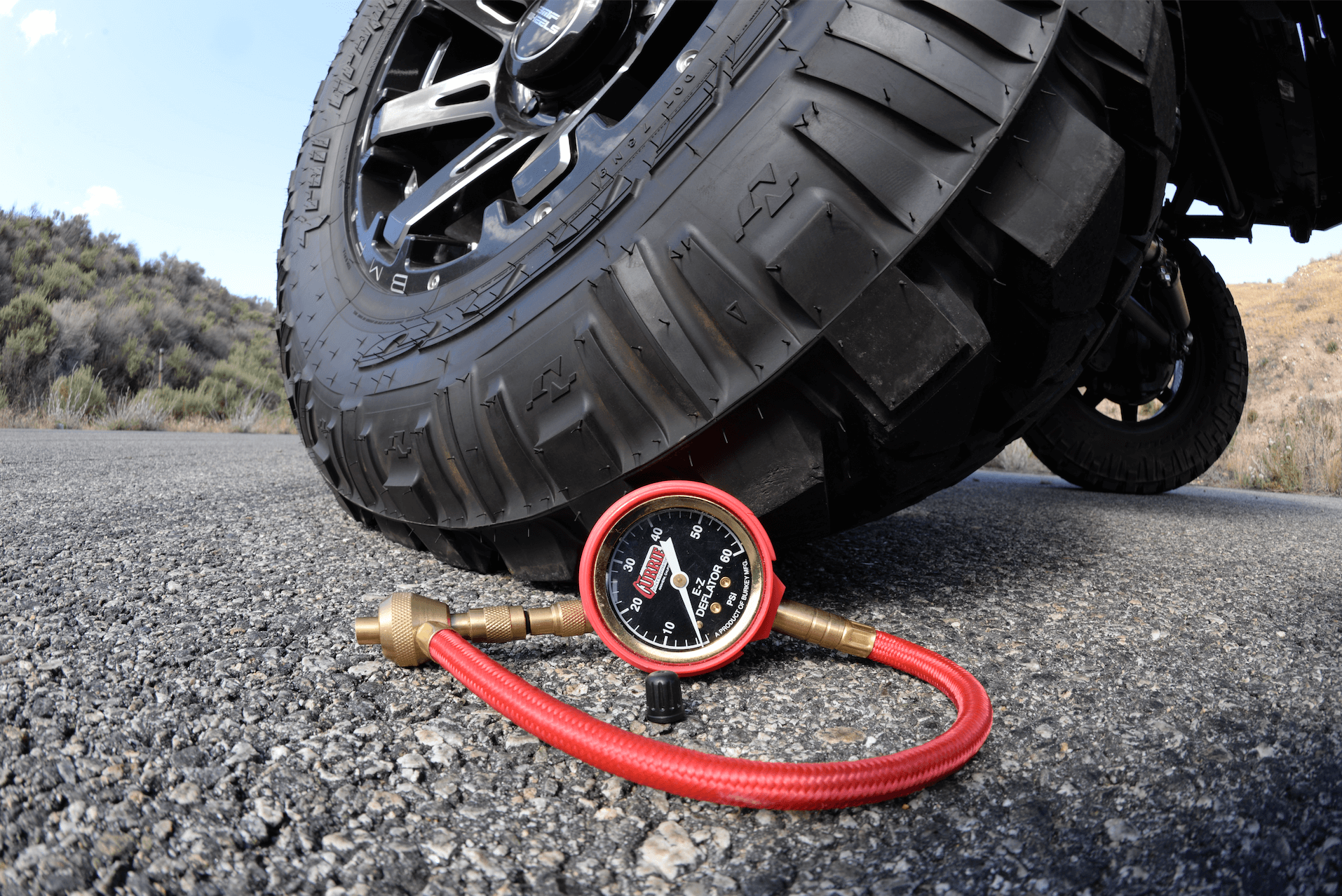
All of this is a big deal considering your new rolling stock likely didn’t come cheap and you want your 4×4 to operate at peak performance. That’s where we come in. Read on to see how to get your tire pressure where it needs to be no matter what’s in front of your 4×4.
Getting Started
The first step is to get your hands on a quality tire pressure gauge. Unfortunately, the cheapie parts store tire pressure gauges can be wildly inaccurate. Comparing three different cheapie gauges on the same tire could result in a difference of 10 psi or more. Look for a quality tire gauge with a dial or digital readout. You can find several versions of these tire gauges at 4WP, some of which even have a bleed off feature that can be used to release excessive air pressure for fine tuning your tire inflation.

Before you get started, you’ll want to get your hands on a quality tire pressure gauge. A dial or digital type gauge will generally be more accurate than a cheapie parts store gauge. We prefer having a dial type gauge with a bleed off valve that can be used to release excess air pressure.
Hopefully, you’ve never made the mistake of simply filling your tires to the maximum air pressure imprinted on the sidewalls. In most cases, this pressure will be significantly higher than what your 4×4 requires and will result in all the bad things listed above. If your 4×4 is rolling on the stock size and model tires, figuring out the correct tire pressure is easy.
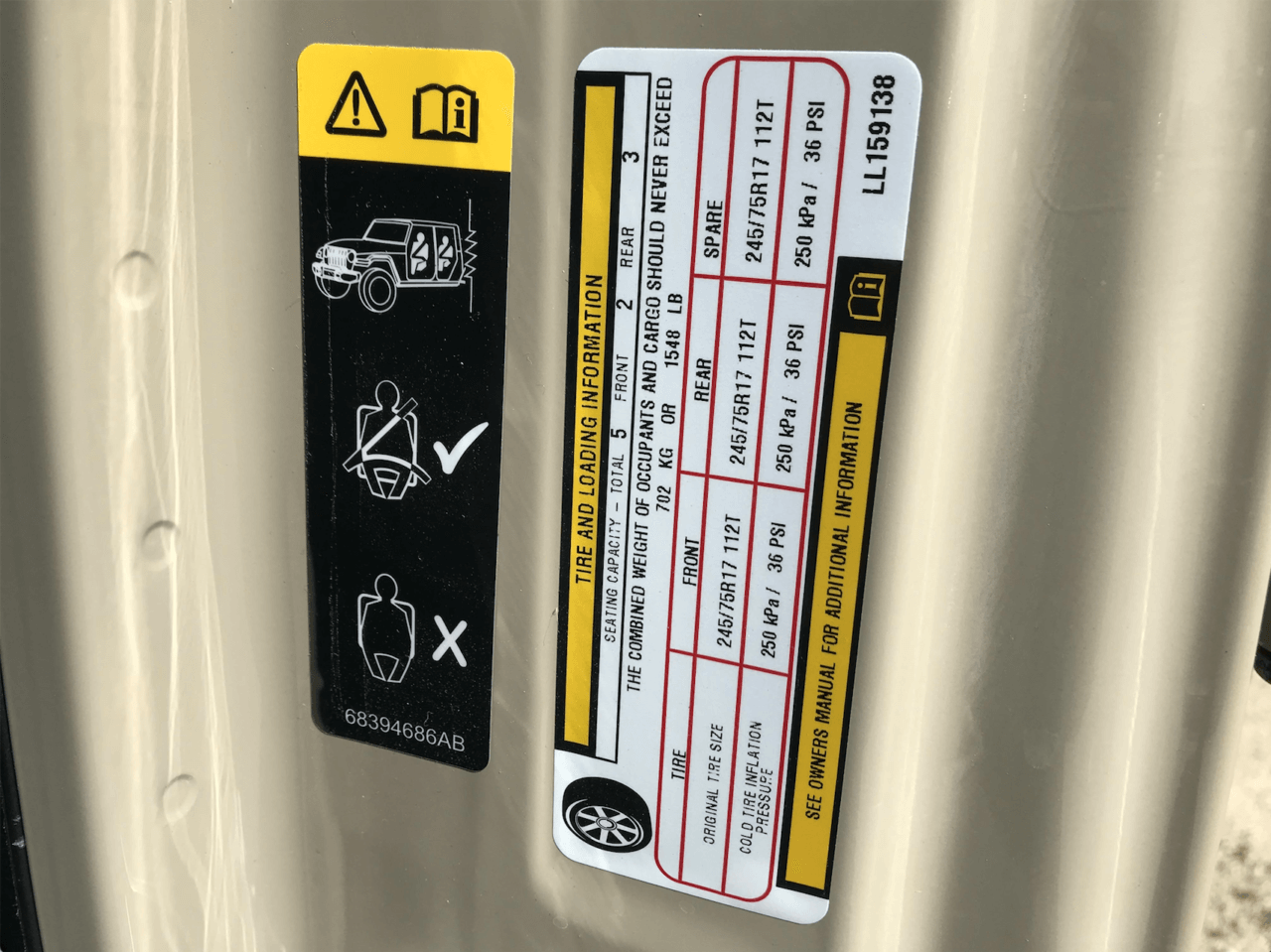
If your 4×4 is rolling on the stock tires, the tire and loading information door sticker or the owner’s manual can be used to identify the correct tire pressure. However, once you install larger aftermarket tires these references are nearly worthless.
All Every new vehicle rolls off of the assembly line with a tire and loading information door sticker that identifies the factory tire size and the air pressure required to support the weight of the vehicle and the cargo it’s rated for. The sticker can typically be found on the driver’s door or door opening near the door strike. The recommended factory tire pressures can also be found in your 4×4’s owner’s manual. The OE tire pressure monitoring systems found on all light motor vehicles sold after September 1, 2007 are tuned to these factory recommended air pressures.
Aftermarket On-Road Tire Pressure
It’s not unusual for the new larger aftermarket tires you added to your 4×4 to feature an increased load rating and weight capacity over the stock tires. This means the new tires can support more weight and handle more tire pressure than the outgoing rolling stock. Running the original recommended tire pressures with the larger aftermarket tires would be no better than arbitrarily selecting a random tire pressure.
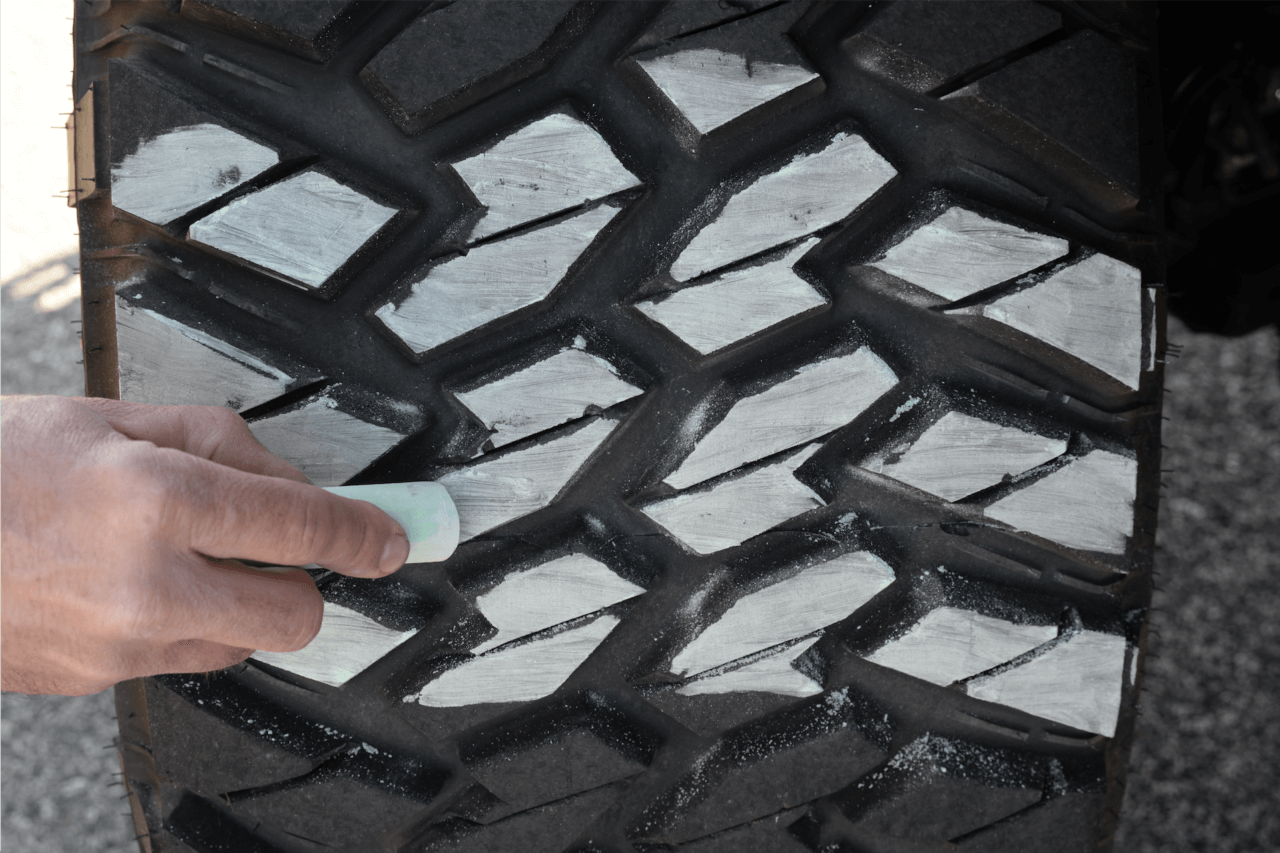
Using a thick chalk line across the tread is a great way to help identify what tire pressure your new larger aftermarket tires require. You’ll need 100-200 feet of a safe, flat and smooth test area, such as an empty parking lot.
The good news is you can easily do a bit of testing to figure out what tire pressure you should be running in your new tires. Find a flat smooth surface, such as parking lot. Inflate your larger aftermarket tires to the maximum tire pressure imprinted on the tire sidewalls. Draw an extra wide chalk line across the tread of each tire and then slowly pull the vehicle forward in a straight line 100-200 feet. Stop and inspect the chalk lines to see where the chalk is worn away. The chalk line will likely be missing from the center of the tread initially. Adjust the air pressure, redraw the chalk line and repeat the test.
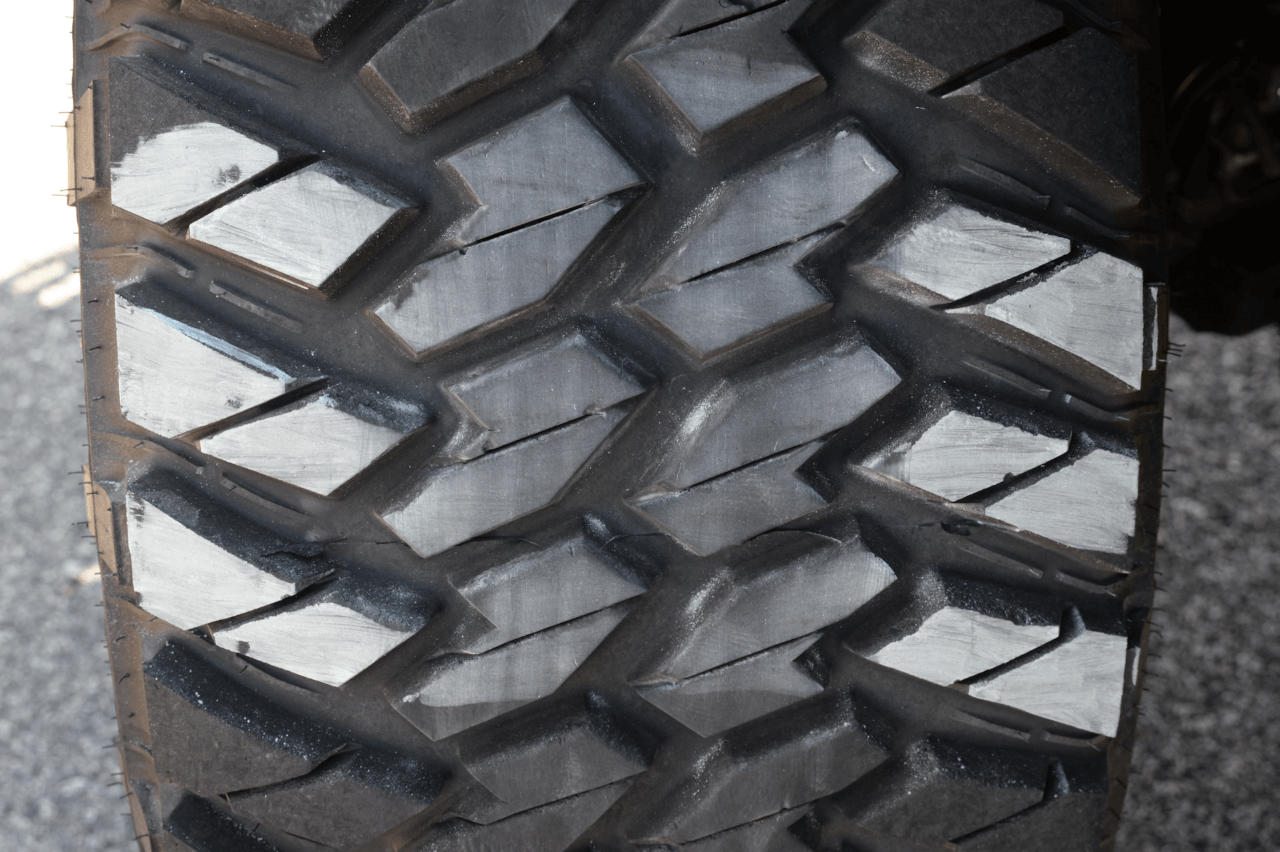
If the chalk is worn from only the middle of the tread after a test run, you have too much air pressure in the tires.
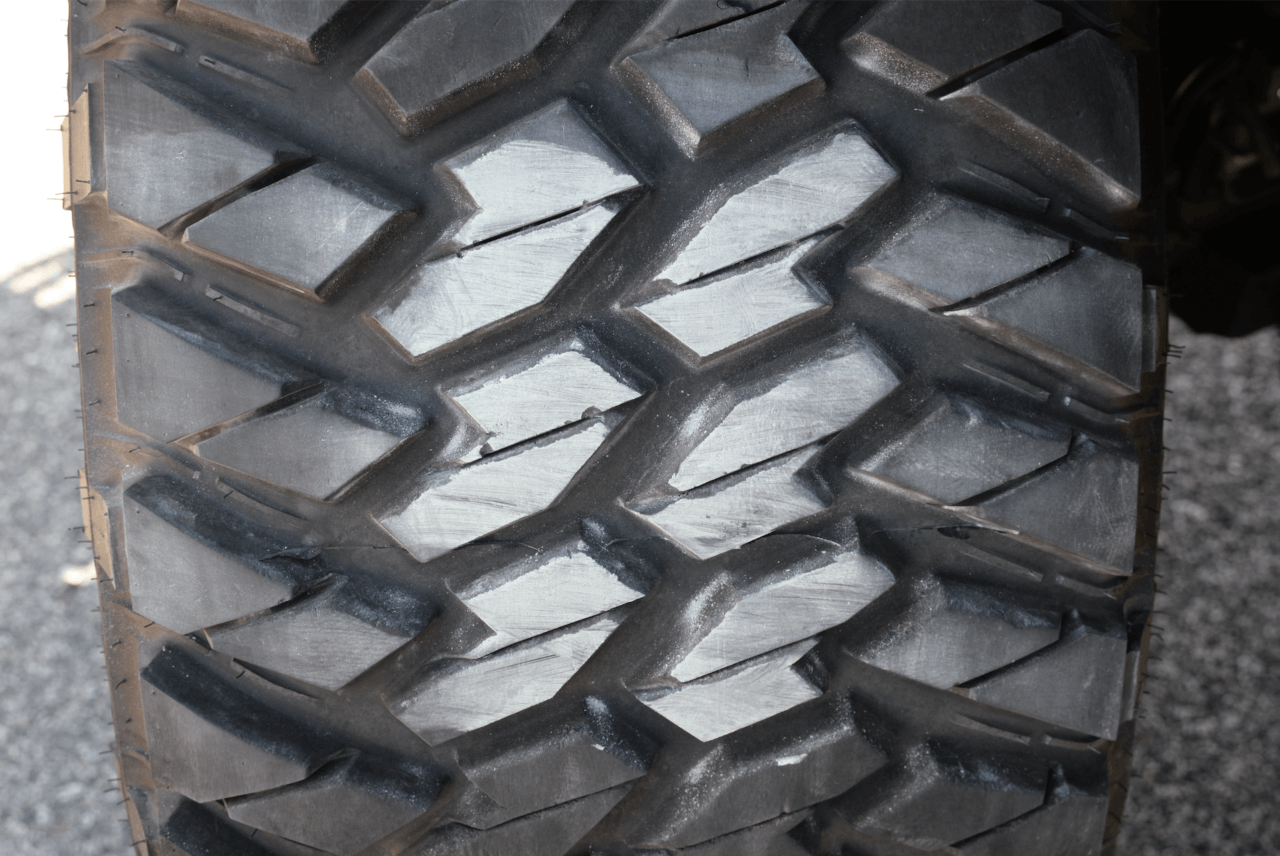
If the chalk is worn from only the edges of the tread after a test run, you have too little air pressure in the tires.
If you let too much air pressure out of the tires you’ll start to see the chalk only wear away on the outer edges of the tire tread. Increase the air pressure and repeat the test. Continue adjusting the tire air pressures until the chalk line looks worn evenly across the entire tread surface. Make note of the front and rear tire pressures. You’ll likely need a different tire pressure for the front tires than you do for the rear tires. If you regularly haul heavy loads or a trailer, you’ll want to perform the chalk line test with your load and trailer as well. Your tire pressure should be adjusted according to the load you plan to haul.
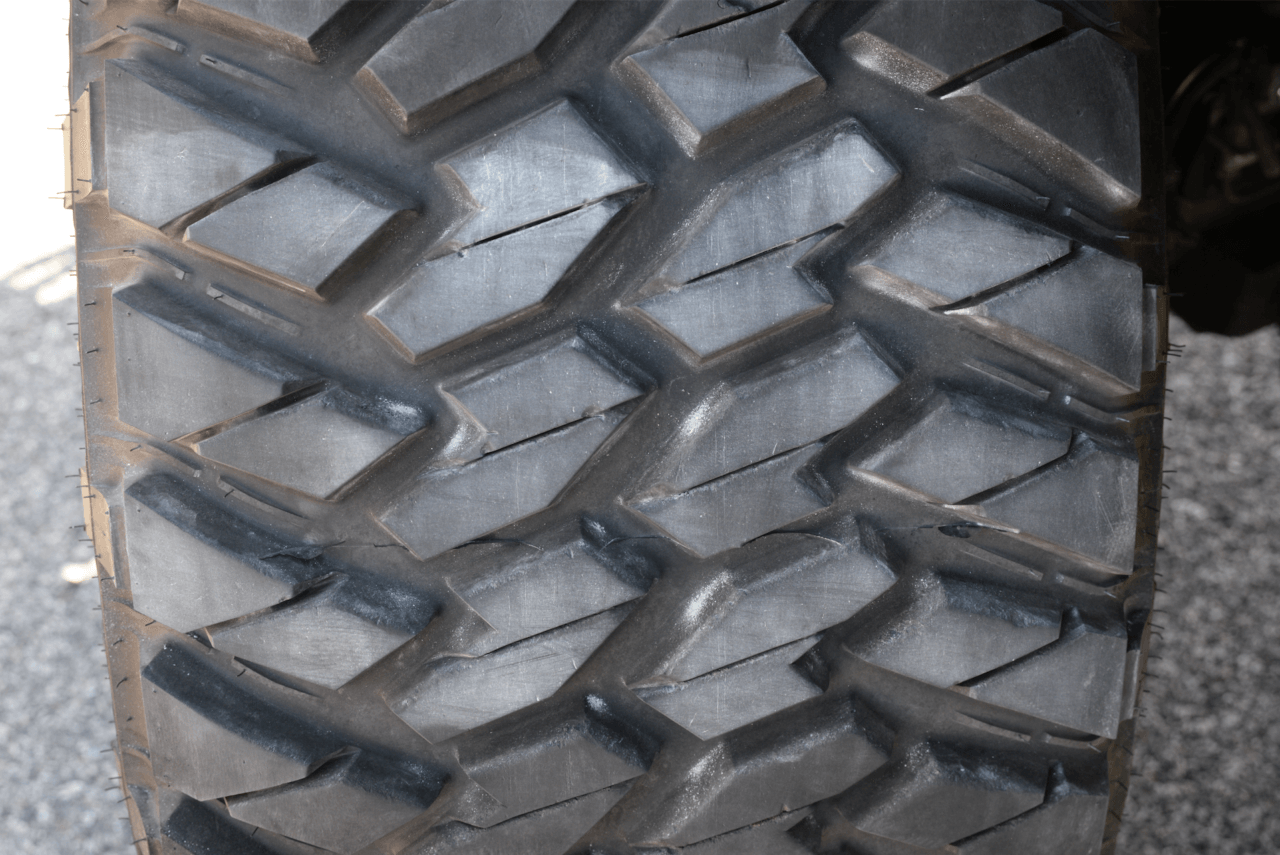
Reapply the chalk, repeat the test and adjust the air pressure in the front and rear tires until the chalk wears away evenly across the entire surface of the tire tread.
Off-Road Tire Pressure
Street tire pressures usually have no place off-road. Airing down your tires for off-road travel provides more traction and offers a smoother ride over rough surfaces such as washboard and rocky trails. However, selecting the proper tire pressure off-road isn’t always as easy as it is for the street. The tire pressure you need off-road will depend on many more factors that don’t come into play on-road. These include tire size and design, vehicle weight, terrain type, planed speed and driving style.

Drivers of similar vehicles with the same tires may find that different air pressures work best for them. Aggressive drivers that prefer higher speeds will generally want more tire pressure off-road than those that prefer low range speeds. A good place to start is to deflate the tires until there are decent bulges in the tire sidewalls. A tire deflator can make quick and accurate work of this task. There are several versions available for every budget and personal preference.

What pressure you need off-road is dependent on many factors. Generally, you want to air down the tires enough that a slight bulge is visible in the sidewall. This allows the tread to conform to off-road obstacles and increases the tread contact patch, which offers more traction than tires that have not been aired down.
It’s not uncommon for off-road tire pressures to range between 3 to 30 psi. A heavy 3/4- or 1-ton truck rolling on radial tires with two-ply sidewalls might be on the higher end of the psi range, while a lighter 4×4 rolling on bias-ply tires will be on the lower end of the psi range. Sharp rocks and high-speed terrain with rocks larger than your fist will require more tire air pressure than traversing sandy and loose soils at slow speeds.

Off-road tire pressures that are too low can result in tire sidewall and wheel damage. Higher vehicle speeds over rocky terrain will dictate the need for higher tire pressures than lower speeds and less rocky terrain like sand and snow.
If you feel rocks bouncing off of the wheels due to overly low tire pressures or the tire beads unseat when aggressively traversing sand, you’ll want to increase the tire pressure. For ultimate off-road performance you may find that beadlock wheels and other tire bead retention devices are necessary for your preferred tire pressures off-road. Beadlock wheels and tire bead retention devices will keep the tire beads seated, regardless of lower tire pressures and off-road conditions.
Off-Road Tire Pressure

Your new larger diameter tires usually won’t need as much air pressure as the smaller factory sized tires, which sets off the TPMS warning lights and chimes. Aftermarket programmers are available to reset the psi threshold of the warning lights in the dashboard of your 4×4. The programmers access your vehicle computer via the OBD II port.
Once you’ve optimized the tire pressure of your new bigger tires, you’ll likely find that the factory TPMS (Tire Pressure Monitoring System) on ’07 and newer 4x4s will throw a code and a dashboard warning light. This light will also show up when you air down for off-road travel. You can try to ignore the system, but the glaring warning light and incessant audible reminder can be downright annoying for most of us. Fortunately, several aftermarket companies offer handheld programmers that can be used to recalibrate your factory TPMS for the new tire size and your desired air pressures. The programmers plug into the OBD II port of your 4×4 and only take a few minutes to employ.



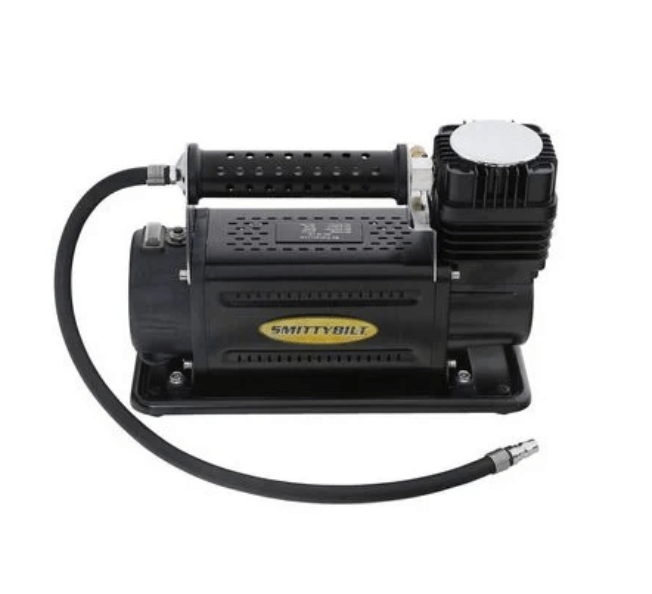







2